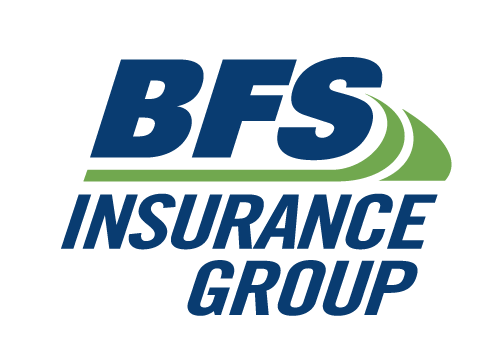
Pressures from inflation can affect companies of all sizes, but they can be especially significant for small business owners who may have fewer resources to use as an effective hedge against rising costs.
Costs for labor and materials are rising, while pandemic- and weather-related supply chain issues further complicate business operations. For many, it may feel like a perfect storm.
While some of these factors are also raising the cost of insurance, making sure you have the right level of coverage is an important part of your strategy to protect your small business from the effects of inflation. Specifically, as the cost to replace lost property rises, you’ll need to adjust your coverage to be sure that everything covered by your policy is insured to full value. First, it’s important to understand how inflation can affect your small business.
How Does Inflation Affect Small Businesses?
Several trends are impacting inflation today, all of which can affect small businesses who experience an event that leads to an insurance claim. These can include:
- Building costs. Supply chain issues related to materials and rising labor costs are contributing to a rise in the cost of constructing new buildings. For example, building a new warehouse in early 2022 cost nearly 28% more than an identical warehouse built just one year prior.1
- Global demand. Competition for building materials continues to increase. For example, the cost of structural metal products rose 43% between January 2021 and January 2022.2
- Extreme Weather. Weather catastrophes can cause local inflationary pressures which are compounded by the fact that the frequency of extreme weather events continues to increase. In fact, during the last five years, the annual average for major destructive weather events rose to 17.8, according to the National Centers for Environmental Information. If you look back to 1980, the average number of major destructive weather events per year was just 7.7. Individual storms are causing more than $1 billion in damages with increasing frequency.3
As materials and labor costs rise, many business owners have found it nearly impossible to rebuild their commercial properties when their insurance policies were based on outdated limits. Despite these risks, 43% of small businesses with under 100 employees are underinsured, according to recent research from Verisk. 4
As a result, more small business owners find it difficult to come back from a major loss. At least 25% do not reopen, often because they were underinsured and couldn’t take on the significant and often unexpected out-of-pocket costs required to deal with a major loss event.5
What Does Small Business Insurance Cover?
As a small business owner, you need to protect a variety of business property assets, including buildings, vehicles, inventory and equipment, and the loss of business income caused by any downtime after an incident.
That’s why it’s so important to purchase a Business Owner’s Policy (BOP). A BOP covers property such as structures, business personal property, lost business income and liability to help cover the cost of any third-party claims against your business. Cars and trucks owned by the business can be covered separately under commercial auto policies.
The rising cost of materials required to rebuild a structure after significant damage from a fire or other covered loss event isn’t the only inflation risk to consider when working with your agent to set your policy limits. Inflation also affects equipment replacement costs for an array of property types, including forklifts, customized shelving and specialized manufacturing equipment. Your policy’s coverage for some of these items may have special limits or might be included as part of your building or business personal property limit.
Consider the full range of business personal property types:
- Recently added property, stock or equipment.
- Large and small equipment.
- Computer and IT equipment.
- Material handling equipment.
- Tooling, dies and molds.
- Property of others under your care, custody or control.
- Improvements and betterments, such as fixtures, alterations or additions.
Why Are My Business Insurance Premiums Increasing?
As with most property-related insurance policies, the BOP that you purchase for your business has limits on buildings and business personal property that you want covered. Insurance companies typically adjust those limits automatically on an annual basis to help small businesses keep up with inflation. That’s one of the reasons why premiums tend to rise during inflationary times.
Smart Insurance Decisions to Help Protect Your Business Property from Inflation
It’s a good idea to review your limits with your agent proactively, because the amount of coverage you have can make all the difference between a soft and hard landing in the event of a loss. Ask your agent about how choosing replacement cost coverage—which is designed around the current market value of buildings and materials—as opposed to “actual cash value” coverage—which generally takes into account how the value of certain property depreciates—might affect your specific coverage experience and which type of policy best suits your needs.
Some BOP add-ons that may be more attractive when prices are volatile include those that provide a buffer on limits that go beyond the stated values of the property in your policy. For example, Travelers BOP 2.0 for Small Business (available in most states) offers these popular options:
- Replacement Cost Plus increases the building valuation up to 125% of the scheduled building limit in the event of a covered loss.
- Inflation Guard includes an option that raises limits for building and/or business personal property by a selected percentage up to 9.5% as a buffer against inflationary pressures. This would be on a pro-rated basis during the policy term. Inflation Guard’s adjustments are independent of other limit increases such as Replacement Cost Plus.
3 Actions Every Small Business Owner Can Take Today
Let’s face it. You have plenty of worries when it comes to running your business in volatile economic times. You don’t want to worry about your ability to rebuild after a claim. These steps can help provide some comfort:
- Create and regularly review and update your business continuity plan. Pay particular attention to preparing for potential property, liability and business income losses. Be sure to discuss appropriate insurance coverage limits with your agent.
- Conduct a comprehensive self-valuation of your business’s personal property to determine your level of risk exposure.
- Ask your insurance agent about your coverage limits and confirm you have the best coverages on your BOP policy to ensure that your small business is covered in an inflationary environment.
Small Business Insurance from Travelers
To learn which types of small business insurance may be appropriate to help protect your business and the amount of coverage you need, talk with your local independent agent.
Sources:
1 U.S. Bureau of Labor Statistics. PPI. Tables 7 & 14. January 2022 https://www.bls.gov/ppi/detailed-report/ppi-detailed-report-january-2022.pdf Page 19
2 U.S. Bureau of Labor Statistics. PPI. Tables 7 & 14. January 2022 https://www.bls.gov/ppi/detailed-report/ppi-detailed-report-january-2022.pdf Page 22
3 NOAA National Centers for Environmental Information (NCEI) U.S. Billion-Dollar Weather and Climate Disasters (2022). https://www.ncei.noaa.gov/access/monitoring/billions/, DOI: 10.25921/stkw-7w73
4 Verisk research, 2020. https://www.verisk.com/insurance/visualize/what-insurers-need-to-know-about-the-micro-business-market/
5 FEMA, 2018. https://www.fema.gov/press-release/20210318/stay-business-after-disaster-planning-ahead
